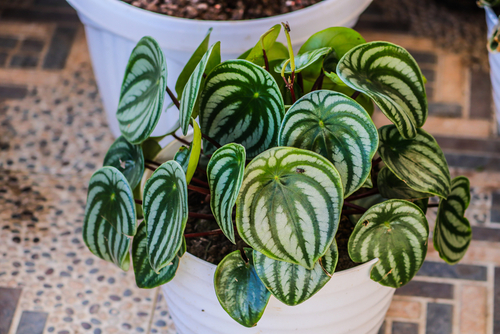Peperomia plants are a popular choice for indoor gardeners due to their attractive foliage and easy-to-care-for nature. However, if you notice your peperomia plant drooping, it may be an indication that something is not quite right.
Understanding the common causes of drooping in peperomia plants can help you identify and address the issue quickly, before it becomes a bigger problem.One of the most common causes of drooping in peperomia plants is watering issues. Overwatering or underwatering can both cause the leaves to droop and become limp.
Light and temperature factors can also play a role, as peperomia plants prefer bright, indirect light and temperatures between 65-75°F. Additionally, humidity and air quality, soil quality, pest and disease management, and nutrition and fertilization can all impact the health of your peperomia plant.
By understanding the potential causes of drooping, you can take steps to prevent it and keep your peperomia plant healthy and thriving.
Key Takeaways
- Peperomia plants may droop due to a variety of factors, including watering issues, light and temperature factors, humidity and air quality, soil quality, pest and disease management, and nutrition and fertilization.
- To prevent drooping in peperomia plants, it’s important to provide them with the right growing conditions, including proper watering, lighting, and temperature.
- Regular monitoring and maintenance can help you catch and address any issues before they become more serious.
Learn more about plant care from these other posts:
Understanding Peperomia Plant
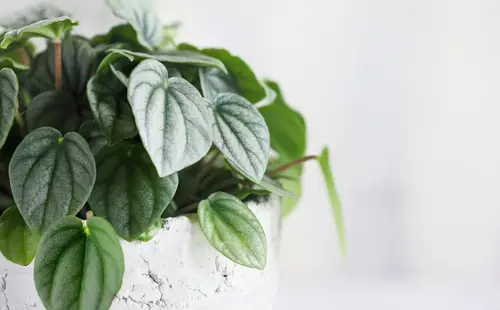
Peperomia is a popular houseplant known for its low-maintenance and tropical nature. It is a member of the Piperaceae family, which includes black pepper. The plant is native to Central and South America, and there are over 1,000 species of Peperomia plants.
The leaves of the Peperomia plant are thick and fleshy, and they come in a variety of shapes, sizes, and colors. Some popular varieties of Peperomia include Watermelon Peperomia, Radiator Plant, and String of Turtles.
The plant is easy to care for and can thrive in a range of lighting conditions, making it a popular choice for indoor gardening.
Peperomia plants are known for their ability to purify the air by removing harmful toxins. They are also believed to have a calming effect on the mind and body, making them a popular choice for office spaces and bedrooms.
Despite their low-maintenance nature, Peperomia plants can sometimes experience drooping leaves, which can be a cause for concern for plant owners. There are several reasons why a Peperomia plant might droop, including dehydration, pest infestation, and poor soil drainage.
In the next section, we will explore some of the common causes of Peperomia plant drooping and how to fix them.
Why Is My Peperomia Plant Drooping – 7 Common Problems
Peperomia plants are known for their hardiness, but they can still experience drooping from time to time. Here are some common causes of drooping in peperomia plants:
1. Dehydration
Dehydration is one of the most common reasons for drooping in peperomia plants. When the plant doesn’t receive enough water, its leaves and stem become more flexible, and the plant becomes softer to touch. In severe cases, the plant may wilt and show signs of stunted growth.
2. Overwatering

Overwatering is another cause of drooping in peperomia plants. When the plant receives too much water, the roots may become waterlogged, which can lead to root rot. This can cause the plant to droop and show signs of wilting.
3. Poor Drainage
Poor drainage can also cause drooping in peperomia plants. If the soil doesn’t drain well, the roots may become waterlogged, which can lead to root rot. This can cause the plant to droop and show signs of wilting.
4. Insect Infestation
Insect infestations can also cause drooping in peperomia plants. Insects such as spider mites and mealybugs can suck the sap from the plant, which can cause the plant to droop and show signs of stunted growth.
5. Diseases
Diseases such as fungal infections can also cause drooping in peperomia plants. Fungal infections can cause the plant to droop and show signs of wilting. In severe cases, the plant may die.
6. Poor Lighting
Poor lighting can also cause drooping in peperomia plants. If the plant doesn’t receive enough light, it may become weak and droop. On the other hand, if the plant receives too much light, it may become scorched and show signs of stunted growth.
7. Overfertilization
Overfertilization can also cause drooping in peperomia plants. If the plant receives too much fertilizer, it may become burned and show signs of stunted growth.
Watering Issues
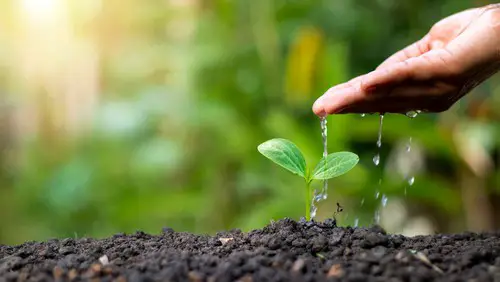
Peperomia plants can be sensitive to watering, which can lead to drooping leaves. Understanding watering issues is crucial to maintain a healthy peperomia plant.
Overwatering
Overwatering is a common issue that can cause peperomia plants to droop. When there is too much water in the soil, it can lead to root rot, which can cause the plant to wilt. Overwatered plants may also have yellowing leaves or a mushy stem.
To prevent overwatering, it’s essential to ensure that the soil has proper drainage. Peperomia plants prefer well-draining soil, and it’s essential to have drainage holes in the pot to allow excess water to escape. It’s also crucial to avoid watering the plant too frequently, as this can lead to waterlogged soil.
Underwatering
Underwatering is another common issue that can cause peperomia plants to droop. When the soil is too dry, the plant may not receive enough water to maintain its turgor pressure, causing the leaves to wilt. Underwatered plants may also have dry soil or brown, crispy leaves.
To prevent underwatering, it’s crucial to water the plant consistently. Peperomia plants prefer consistently moist soil, but it’s essential to avoid overwatering. It’s also crucial to ensure that the soil has proper drainage to prevent water from sitting in the pot.
Light and Temperature Factors
Light Requirements
Peperomia plants require bright but indirect light. Direct sunlight can burn the leaves and cause them to droop. If the plant is not getting enough light, it can also lead to drooping leaves. In the winter months, when the days are shorter, it may be necessary to supplement the plant’s light with a grow light.
Temperature Requirements

Peperomia plants prefer temperatures between 65°F and 80°F. Extreme temperatures, whether high or low, can cause the plant to droop.
In the winter months, it is important to keep the plant away from drafty windows or doors, as cold drafts can cause the plant to wilt. If the temperature drops below freezing, the plant may not survive.
To ensure that the plant is not exposed to extreme temperatures, it is important to keep it in a location where the temperature is consistent. Avoid placing the plant near heating or cooling vents, as this can cause fluctuations in temperature that can stress the plant.
Humidity and Air Quality
Peperomia plants thrive in moderate to high humidity levels, which can be difficult to maintain indoors. Low humidity levels can cause the leaves to droop and wilt, making the plant look unhealthy.
To combat low humidity levels, it is recommended to use a humidifier or mist the plant regularly. A humidifier can help to maintain a consistent level of humidity in the air, which can benefit not only the Peperomia plant but also other indoor plants and the overall air quality.
Misting the plant can also be an effective way to increase humidity levels. Simply fill a spray bottle with water and mist the plant’s leaves and soil. Be sure not to overdo it, as too much misting can lead to overwatering and root rot.
In addition to maintaining proper humidity levels, it is important to ensure that the air quality around the Peperomia plant is high. Poor air quality can lead to pest infestations and other issues that can cause the plant to droop.
To improve air quality, it is recommended to keep the plant in a well-ventilated area and avoid exposing it to pollutants such as cigarette smoke and chemicals. Regularly dusting the leaves can also help to keep the plant healthy and free of pests.
Soil and Repotting
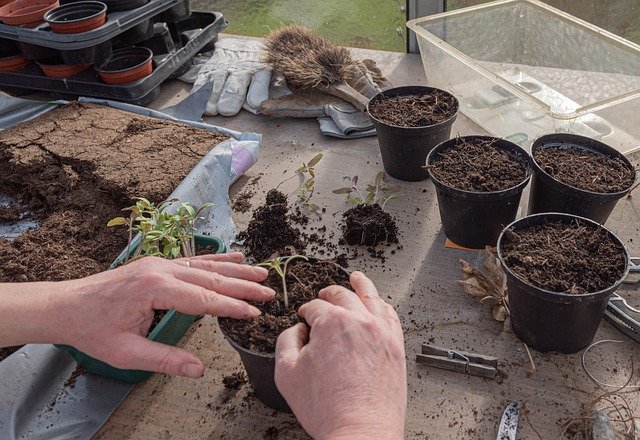
Choosing the Right Soil
Choosing the right soil is crucial for the health of your Peperomia plant. Peperomias prefer well-draining soil that allows for proper aeration. A good potting mix for Peperomia should be a combination of peat moss, perlite, and vermiculite.
Peat moss is an organic material that retains moisture and provides nutrients to the plant. Perlite and vermiculite are inorganic materials that help with aeration and drainage. A good soil mix should have a balance of these materials to ensure that the plant gets the right amount of water and air.
It is essential to avoid using heavy soils that do not allow for proper drainage. Heavy soils can cause water to accumulate in the soil, leading to root rot and other problems.
Repotting Your Peperomia
Repotting your Peperomia plant is necessary when the plant outgrows its current pot or when the soil becomes compacted. Repotting allows for fresh soil, which can provide the plant with more nutrients and a better environment to grow.
When repotting, choose a pot that is one size larger than the current pot. Terracotta pots are a good choice for Peperomias as they allow for proper aeration and drainage.
Before repotting, ensure that the soil is moist to avoid damaging the roots. Gently remove the plant from the pot and loosen the soil around the roots. Remove any dead or damaged roots and place the plant in the new pot.
Fill the pot with the soil mix, ensuring that there is enough space for the roots to grow. Add stones or gravel at the bottom of the pot to improve drainage. Water the plant thoroughly and place it in a bright, indirect light area.
It is recommended to repot Peperomias every two years to ensure healthy growth. However, if the plant is showing signs of stress, such as drooping leaves, it may need to be repotted sooner.
Pest and Disease Management
Identifying Pests

Peperomia plants are susceptible to pests such as mealybugs, spider mites, whiteflies, and scale. These pests can cause damage to the plant’s leaves and stems, leading to drooping and other issues. It is important to identify pests early on to prevent them from spreading and causing more damage.
Mealybugs are small, white insects that often appear in clusters on the leaves and stems of peperomia plants. They feed on the plant’s sap, causing the leaves to turn yellow and wilt.
Spider mites are tiny, red or brown insects that spin webs on the plant’s leaves. They also feed on the plant’s sap, causing the leaves to turn yellow and droop. Whiteflies are small, white insects that fly around the plant and feed on the underside of the leaves. They can cause the leaves to turn yellow and fall off.
Scale is a type of insect that appears as small, brown bumps on the plant’s leaves and stems. They feed on the plant’s sap, causing the leaves to turn yellow and droop.
Managing Diseases
Peperomia plants are also susceptible to diseases such as root rot, stem and root rot, fungi, and bacteria. These diseases can cause the plant’s leaves and stems to become discolored and wilted. It is important to manage diseases early on to prevent them from spreading and causing more damage.
Root rot is a common disease that affects peperomia plants. It is caused by overwatering and poor drainage, which can lead to the roots becoming waterlogged and rotting. To manage root rot, it is important to reduce watering and improve drainage by repotting the plant in well-draining soil.
Stem and root rot is another common disease that affects peperomia plants. It is caused by fungi and bacteria that attack the plant’s stems and roots, causing them to rot. To manage stem and root rot, it is important to remove any affected parts of the plant and treat the remaining plant with a fungicide.
Fungi and bacteria can also cause diseases in peperomia plants. These diseases can cause the leaves and stems to become discolored and wilted. To manage fungal and bacterial diseases, it is important to remove any affected parts of the plant and treat the remaining plant with a fungicide or bactericide.
In managing pests and diseases, it is important to use pesticides and neem oil sparingly and only when necessary. Overuse of these treatments can harm the plant and lead to pesticide resistance.
Keeping the plant pest-free and maintaining proper watering and drainage can also help prevent pests and diseases from occurring in the first place.
Nutrition and Fertilization
Understanding Plant Nutrition
Peperomia plants require a balanced and adequate amount of nutrients to grow healthy and strong. The essential nutrients that peperomia plants need include nitrogen, phosphorus, and potassium.
Nitrogen is essential for the growth of leaves and stems, while phosphorus is necessary for root development and flowering. Potassium is required for overall plant health, disease resistance, and fruit development.
Peperomia plants also need micronutrients such as iron, magnesium, and calcium. These nutrients are required in small amounts but are still essential for plant growth and development.
Iron is necessary for chlorophyll production, while magnesium is required for photosynthesis. Calcium is necessary for cell wall development and overall plant structure.
Proper Fertilization

Fertilizer is an essential component of plant nutrition. When applied correctly, fertilizer can provide plants with the necessary nutrients for healthy growth and development. However, over-fertilizing can cause more harm than good.
It is essential to understand the fertilizer application requirements for peperomia plants. These plants require a balanced fertilizer with equal amounts of nitrogen, phosphorus, and potassium. The recommended fertilizer application is once every two weeks during the growing season and once a month during the dormant season.
Over-fertilizing can cause root burn and damage to the plant. Signs of over-fertilizing include yellowing leaves, stunted growth, and wilting. If you notice these signs, it is essential to stop fertilizing immediately and flush the soil with water to remove excess fertilizer.
Signs and Symptoms of a Drooping Peperomia
Peperomia plants are known for their attractive foliage and easy care, but sometimes they can experience problems that lead to drooping leaves. Here are some signs and symptoms to look out for:
- Wilting or drooping leaves: One of the most common signs of a problem with a peperomia plant is drooping or wilting leaves. This can be caused by a variety of factors, including overwatering, underwatering, low humidity, or exposure to extreme temperatures.
- Brown leaf tips: If the tips of your peperomia’s leaves are turning brown, it could be a sign of underwatering or low humidity. Peperomias prefer moist soil and high humidity, so if the air in your home is dry, you may need to mist your plant or place a humidifier nearby.
- Yellowing leaves: Yellowing leaves can be a sign of a few different problems, including overwatering, underwatering, or nutrient deficiencies. If your peperomia’s leaves are turning yellow, check the soil moisture and consider fertilizing with a balanced houseplant fertilizer.
- Brown spots or edges: Brown spots or edges on the leaves of your peperomia can be a sign of scorching from too much direct sunlight, or it could be a sign of a fungal or bacterial infection. If you suspect your plant has a disease, isolate it from your other plants and consider treating it with a fungicide or bactericide.
- Mushy or soft leaves: If your peperomia’s leaves feel mushy or soft to the touch, it could be a sign of overwatering or root rot. Check the soil moisture and consider repotting your plant into fresh, well-draining soil.
It’s important to pay attention to your peperomia plant and address any problems as soon as you notice them. With proper care and attention, you can help your peperomia recover from drooping leaves and thrive for years to come.
Preventing Drooping in Peperomia Plants
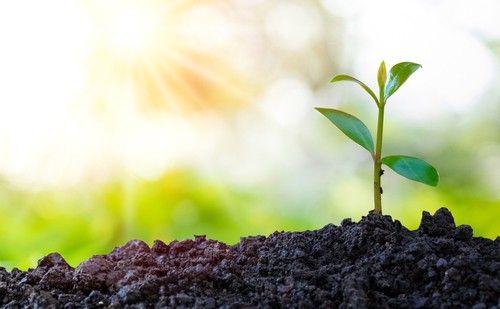
Peperomia plants are beautiful and easy to care for, making them a popular choice among beginner plant enthusiasts. However, these plants can sometimes droop, which can be a sign of an underlying issue. Here are some tips for preventing drooping in peperomia plants:
1. Pay Attention to Watering
One of the most common reasons for peperomia plants to droop is overwatering or underwatering. It is important to pay attention to the watering needs of your peperomia plant and adjust accordingly.
Make sure to water your plant only when the top inch of the soil is dry to the touch. Overwatering can lead to root rot, which can cause the plant to droop.
2. Provide Adequate Light
Peperzmia plants prefer bright, indirect light. If your plant is not getting enough light, it can become weak and droopy. Make sure to place your peperomia plant near a window that receives bright, indirect light. If you notice that your plant is not getting enough light, consider using a grow light to supplement its light needs.
3. Maintain Optimal Growth Conditions
Peperomia plants thrive in warm, humid environments. Make sure to keep your plant in a room with a temperature between 65 and 80 degrees Fahrenheit and a humidity level of 40 to 50 percent. If the air in your home is dry, consider using a humidifier to increase the humidity level around your plant.
4. Fertilize Regularly
Peperomia plants benefit from regular fertilization. Use a balanced fertilizer every four to six weeks during the growing season to provide your plant with the nutrients it needs to thrive.
5. Keep Your Plant Beautiful
Regular pruning can help keep your peperomia plant looking its best. Remove any dead or yellowing leaves to encourage new growth and maintain the plant’s shape. Additionally, make sure to keep the plant’s pot clean to prevent the buildup of harmful bacteria and fungi.
By following these tips, you can prevent drooping in your peperomia plants and keep them looking beautiful and healthy.
Conclusion
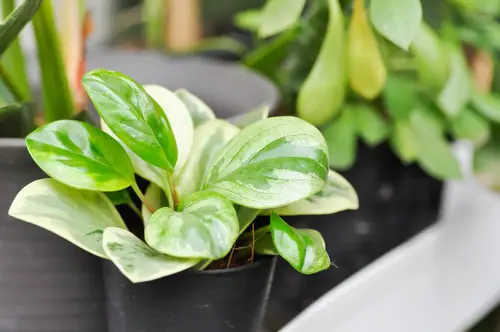
There are several reasons why a peperomia plant may start drooping. The most common cause is dehydration, which can be easily remedied by watering the plant properly and ensuring that the soil is well-draining. Overwatering, on the other hand, can lead to root rot, which can also cause the plant to droop.
Temperature fluctuations can also cause peperomia plants to droop. These plants prefer warm and humid conditions, so it is important to keep them away from cold drafts and direct sunlight. Pests and diseases can also cause peperomia plants to droop, so it is important to keep an eye out for any signs of infestation or infection.
To prevent drooping in peperomia plants, it is important to provide them with the right growing conditions. This includes providing them with the right amount of water, light, and humidity, as well as keeping them away from pests and diseases.
With proper care, peperomia plants can thrive and provide a beautiful addition to any indoor garden.
Frequently Asked Questions
How do you know if peperomia is overwatered?
Overwatering is a common problem that can cause peperomia to droop. Signs of overwatering include yellowing leaves, wilting, and root rot. The soil may also appear waterlogged or have a foul odor. It’s important to allow the soil to dry out between waterings to prevent overwatering.
Why is my peperomia drooping after watering?
If your peperomia is drooping after watering, it may be due to a lack of drainage. Peperomia requires well-draining soil to prevent water from accumulating around the roots.
If the soil is too compacted or does not have enough drainage holes in the pot, excess water can cause the plant to droop.
What can you do for a droopy peperomia?
To revive a droopy peperomia, first check the soil moisture level. If the soil is wet, allow it to dry out before watering again. If the soil is dry, water the plant thoroughly and allow the excess water to drain out of the pot.
You can also prune any damaged or diseased leaves to promote new growth.
How do you revive peperomia?
To revive a struggling peperomia, start by identifying the underlying issue. Common problems include overwatering, lack of light, and pest infestations.
Once you have identified the problem, take steps to address it. This may include adjusting the watering schedule, moving the plant to a brighter location, or treating for pests.
Why is my peperomia falling over?
If your peperomia is falling over, it may be due to a lack of support. Peperomia has a shallow root system and may require staking or support to keep the stem upright. You can use a bamboo stake or similar support to prop up the stem and prevent it from falling over.
Peperomia dropping healthy leaves
If your peperomia is dropping healthy leaves, it may be due to environmental stress. This can include changes in temperature, humidity, or light conditions.
To prevent further leaf drop, try to maintain consistent environmental conditions and avoid sudden changes. You can also fertilize the plant to promote healthy growth.

